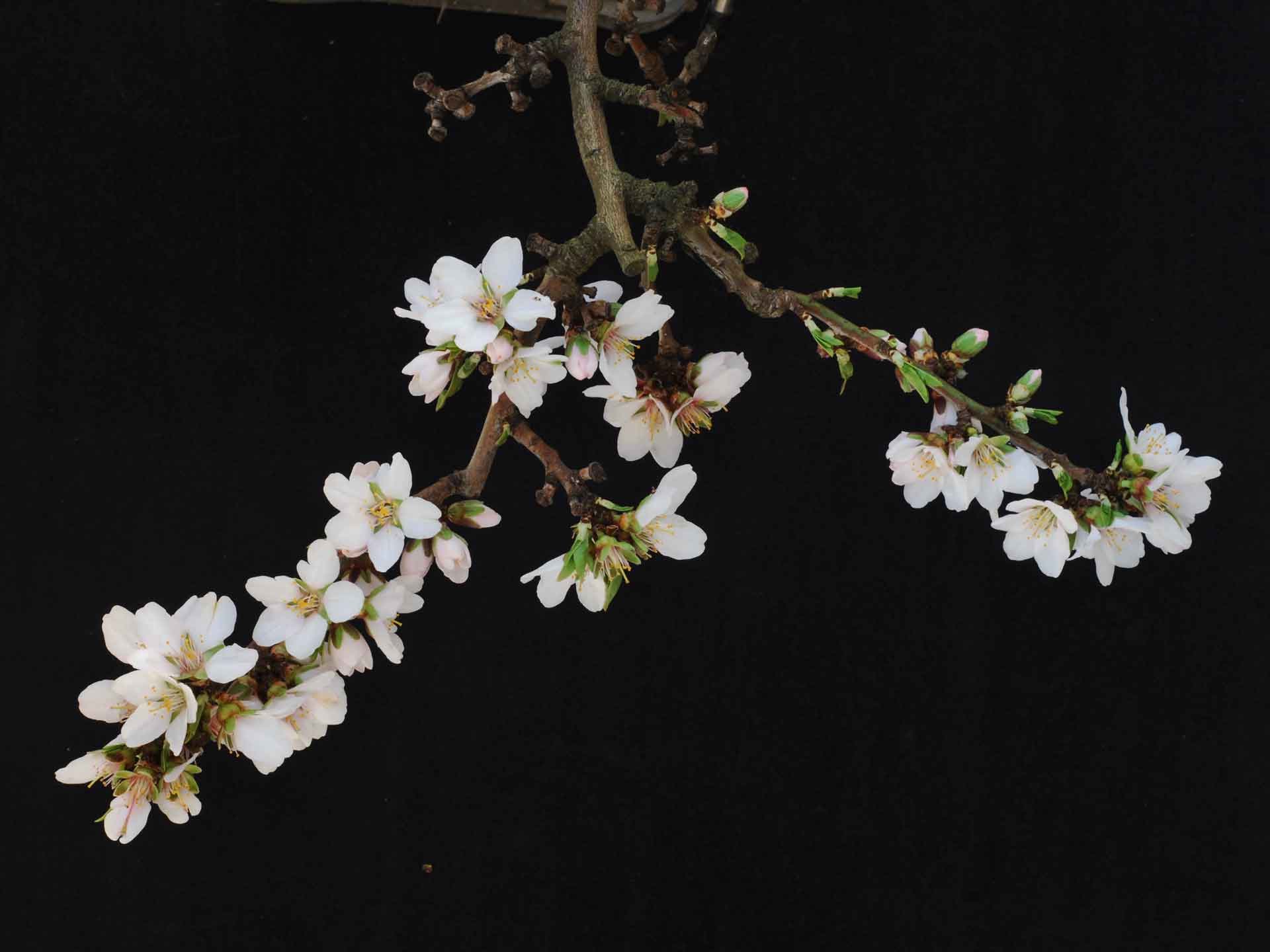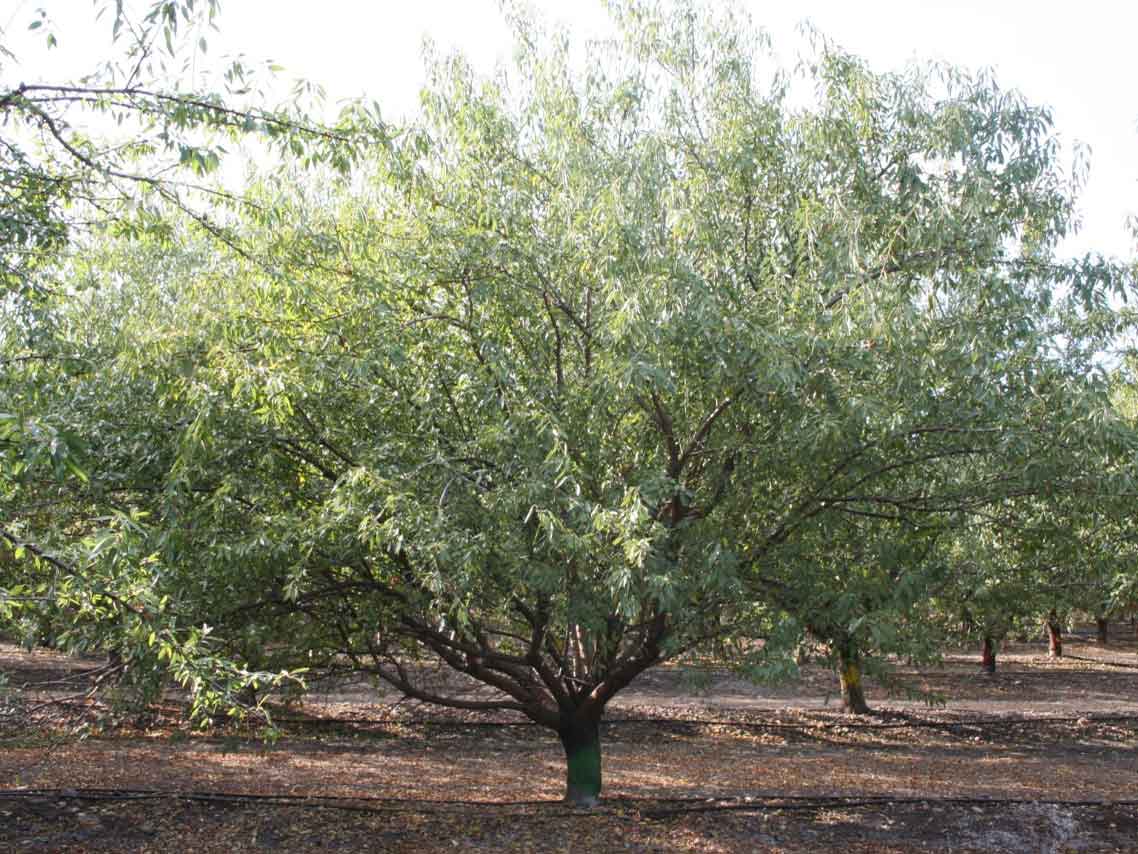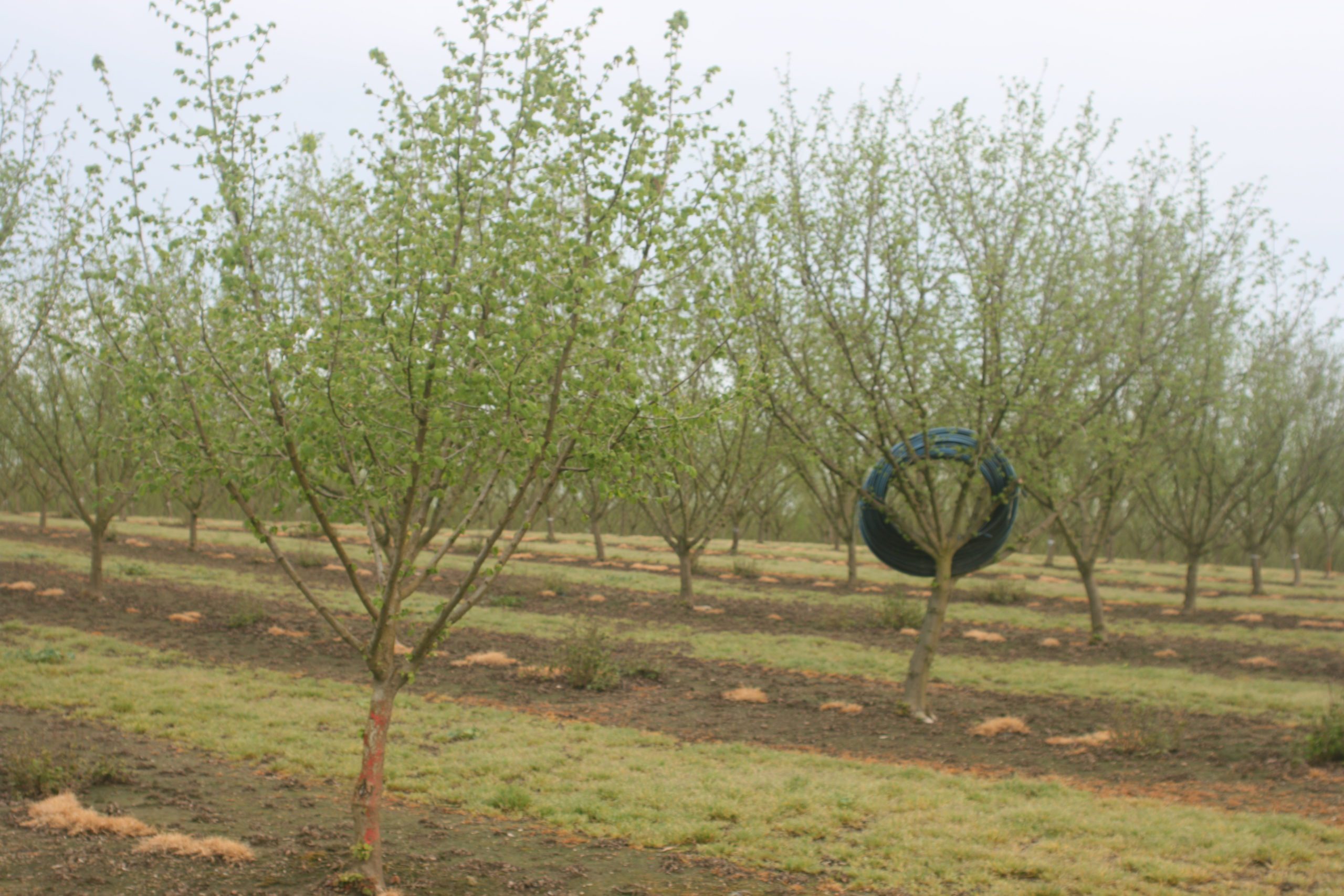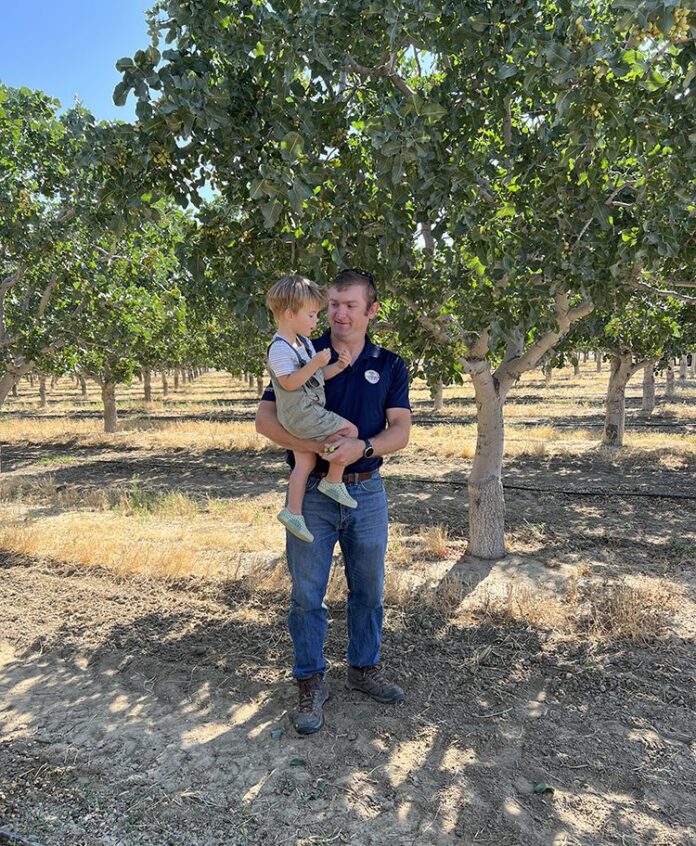
In a Nutshell: Listen to the Summary
Full Article
Jimmy Nichols of Nichols Farms knew he didn’t want to be a grower. After bringing home a poor report card in the fifth grade, his dad had him spend the summer weeding cotton instead of playing baseball. He decided then he didn’t have an interest in agriculture.
Luckily for Jimmy, that decision didn’t stick. He now oversees Nichols Farms growing operations while his brother takes care of the supply chain and processing side of the business.
The Nichols family grows almonds and pistachios including organic in three counties and runs its own processing facility. In addition, Nichols is always looking to improve how almonds and pistachios are grown, so much so that several years ago he developed irrigation technology to remotely control and monitor irrigation systems. It started as a project at one of their farms and has turned into a commercial business, HotSpot AG, which helps growers up and down the state conserve water resources.
We asked Nichols to share with West Coast Nut readers some of his thoughts about the current and future state of the tree nut industry:
Q. What is the history of your farm?
Well, it’s a family business. So, started by my grandfather back in the early 1960s primarily growing row crops such as corn, wheat, alfalfa and sugar beets. Then in the early ’80s, my grandfather, who’s always been a big fan of diversification, wanted to try some different types of crops. He planted almonds in the early 1980s and then the first pistachio orchard in 1983.
Then my dad came back to the farming operations in the early ’80s, and he was tasked with learning to grow the pistachios and almonds. Shortly after that, he decided he wanted to start a processing facility. So, Nichols Pistachio started in the early 1990s. We process and market the pistachios both domestically and internationally.
Q. What was your route to joining the family business?
After taking ag mechanics in high school, I ended up deciding I wanted to study agriculture in college and then worked for a couple of different places before coming back to the farm in 2013.
I was gone for about four years. I worked on a walnut and pistachio farm in Spain the summer following graduation then worked at my grandfather’s blueberry farm in the Delta.
Q. Do you feel like any of that experience in other places has helped you now?
I went to work on that farm in Spain because I really wanted to learn Spanish to be able to connect with our employees here. That was very beneficial, and I still use that today.
Another thing I found kind of interesting over there was just how the international agricultural community views California agriculture, especially in specialty crops.
Traveling halfway around the world, the first couple of things I saw when I got there were equipment that said “Made in Chico” or “Made in McFarland.” Additionally, from a research and production practice perspective, all the books on the bookshelf were publications that came from UC Davis or UC ANR as far as best practices.
That left the impression that we have a lot of assistance in California for helping growers solve production challenges.

Q. Talk a little bit about what your farm has done with orchard sanitation.
The main defense we have against a particular type of pest, navel orangeworm, is sanitation. That is the process of destroying the overwintering habitat for that pest. So, after a couple of troublesome navel orangeworm years in 2016 and 2017, we started to look at how we could improve our practices. We actually developed a machine.
After following mummy shaking, or knocking the nuts out of the tree, we would use an almond harvester to pick up the nuts, and it would actually grind the pistachios and almonds. We ran that for probably four years, and then more economical machines came along to do the same thing. “The Worminator,” what we called it, is now retired.
We worked with a company out of Corcoran who was contracted to build that machine. We were thinking that it could have a potential commercial outcome. However, others came up with more creative ways to do the same thing more economically. Now we’re just using machinery that’s easier on the tractor and other implements. But it worked well for the time it ran.
Q. Talk a little bit about how farming practices have evolved over the years.
I feel like a lot has changed. I think in more recent years, the emphasis has really been on soil and tree health. You can kind of think of regenerative agriculture in some respect. But really, what we’re focusing on at this moment is starting with soil health and trying to put carbon back into the soil.
One of the research projects we’ve done with [University of California] has found a very high correlation in terms of yield to those soils that have high infiltration rates and can hold oxygen in the soil. So, we’ve been working on adding different types of carbon-based soil amendments to help with infiltration, which in turn really helps the tree from a health and yield perspective.
Additionally, I learned a lot from my father and our previous ranch manager from a nutrition management perspective. I like to call it kind of a meat-and-potatoes approach, mostly focusing on nitrogen, boron and potassium.
But we have new team members here at the farm who are really looking deeper at each one of the macro and micronutrients.
Utilizing the irrigation monitoring and automation has been a huge help, as we can precisely apply water based on crop water usage and what our [Sustainable Groundwater Management Act] regulations allow.
Q. What kinds of things keep you up at night related to growing tree nuts?
The potential for retaliatory tariffs is top of mind right now. The last round of tariff wars did not help U.S. farmers by any means, so that’s certainly top of mind, especially as it’s in the news right now.
I’d say the next one is the water future in California. A lot of SGMA policies are coming into effect. Looking out 5, 10 or 15 years down the road and wondering what those water policies will look like and what will happen during consecutive drought years keeps me up at night.
And then third, I’d say pest management. There are three groups of insect pests that have the potential to be very problematic for pistachios and almonds.
Navel orangeworm is one that’s been a pest for a long time. But two others that have become an issue in more recent years are mealybugs and large bugs, like stink bugs and leaf-footed bugs. We had a lot of damage due to mealybugs and leaf-footed bugs last year in both almonds and pistachios.
The problem is the types of materials being developed for them have issues when it comes to sending treated products overseas. There are a lot of issues related to maximum residue levels, making it quite challenging to keep orchards free of those pests.
Q. What are you most hopeful about for the future when it comes to growing almonds and pistachios?
What I’m most hopeful about is that people are viewing nuts as a healthy and safe snack item. It’s very fun being in an industry where you can grow something that people love to snack on, and it’s healthy and nutritious at the same time. They are high in protein, good fat, fiber and many other micronutrients.
What makes me most optimistic about farming nuts is there’s going to be a future for them because a lot of consumers are becoming more health-conscious and want to know more about where and how their food is being grown.
Q. Can you talk a little bit about the havoc the uncertainty of tariffs and policy causes for growers? What is that doing to your ability to plan and to know what’s next?
What we saw with this last trade war was a huge drop in demand, and that greatly affected the price of almonds, pistachios and especially walnuts. So, for almonds and walnuts especially, the last couple years have been a very hard struggle from a pricing standpoint.
Our input costs have gone up, and just as we’re getting to the point where we’re starting to see almond pricing be profitable again, there’s the potential for it to go down.
So, the uncertainty is hard to live with, from the fact that it just feels like it could be taken away. That pricing that’s been inching up year after year feels like it could just disappear.
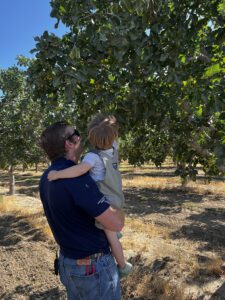
Q. Thinking about the future, what would be the best possible path for the future of almonds, pistachios and walnuts?
I think there’s a lot of negative sentiment around water usage, especially for nut crops.
My wife is from the Bay Area, so I have the opportunity to talk with a lot of her friends and family in L.A. and San Francisco. The first thing I always get asked is, “Do they use a lot of water?” And I don’t think that’s the right way to look at it.
What should really be focused on is how water is used to grow those crops. Farmers are especially careful about conserving resources. Water is expensive in California. The cost of energy to pump or move water is expensive, and the cost to apply it is also expensive, whether that’s through automation or paying labor.
One of the things we need to do is continue to educate consumers about how things are grown in California.
Q. Who was the biggest influence or mentor for you in your career, and how important was that to your success?
I’d say it’s both my father and grandfather. I remember a metaphor that my grandfather taught me. He spoke a lot about sustainability before it really became a buzzword.
One of the things he shared with me is that sustainability is like a stool with four legs. He assigned a label to each of those legs and said, “If one of those legs is removed, it’s wobbly, but it can still stay up. You remove two, and it falls over.”
He said those legs were people, planet, product and price.
To have a sustainable farming practice, you’ve got to take care of your people, take care of the planet, grow a high-quality product because if you grow low quality, people won’t eat it and then the last one, which is kind of out of our control, is price.
I still use that advice to this day. He gave it to me 10 or 15 years ago.
Q. Talking about taking care of the people, a lot of people I talk to say giving back to the community is really important from both a business perspective and a personal perspective. Are there any causes that you guys get behind?
That was especially important to my mother. Unfortunately, she passed away a couple years ago, but from the start of her coming back to the farm, her emphasis for giving back to the community was really focused on health and education.
One of our achievements was to start a scholarship foundation within the company. Last year, we were able to award over 20 scholarships to the families of employees who work at the farm and the processing facility.
One of the things she started was a health fair and back-to-school program. And another tradition that still lives on today is every Sunday during pistachio harvest, we feed several hundred employees.
The first weekend in October, we always do a Spaghetti Day. That started with my mom borrowing all these crockpots from her friends, 15 or 20 crockpots, and making spaghetti for hundreds of employees who were working on that Sunday.
The community that we live in means a lot to myself and my family. It’s a big piece of the business for sure.
Q. What do you think are going to be the big advancements coming down the line?
I think just within the technology umbrella, robotics and AI are going to have a huge impact. Being able to perform tasks that humans have been doing for a long time is going to make a big difference.
Also, technology when it comes to plant breeding. We’ve seen huge advancements in crops like strawberries or grapes, more so annual crops, but I think a lot of that is being adopted into perennial crops like nut crops. I just heard about this a couple of weeks ago, but I’ve heard there’s now a self-pollinating Nonpareil variety.








